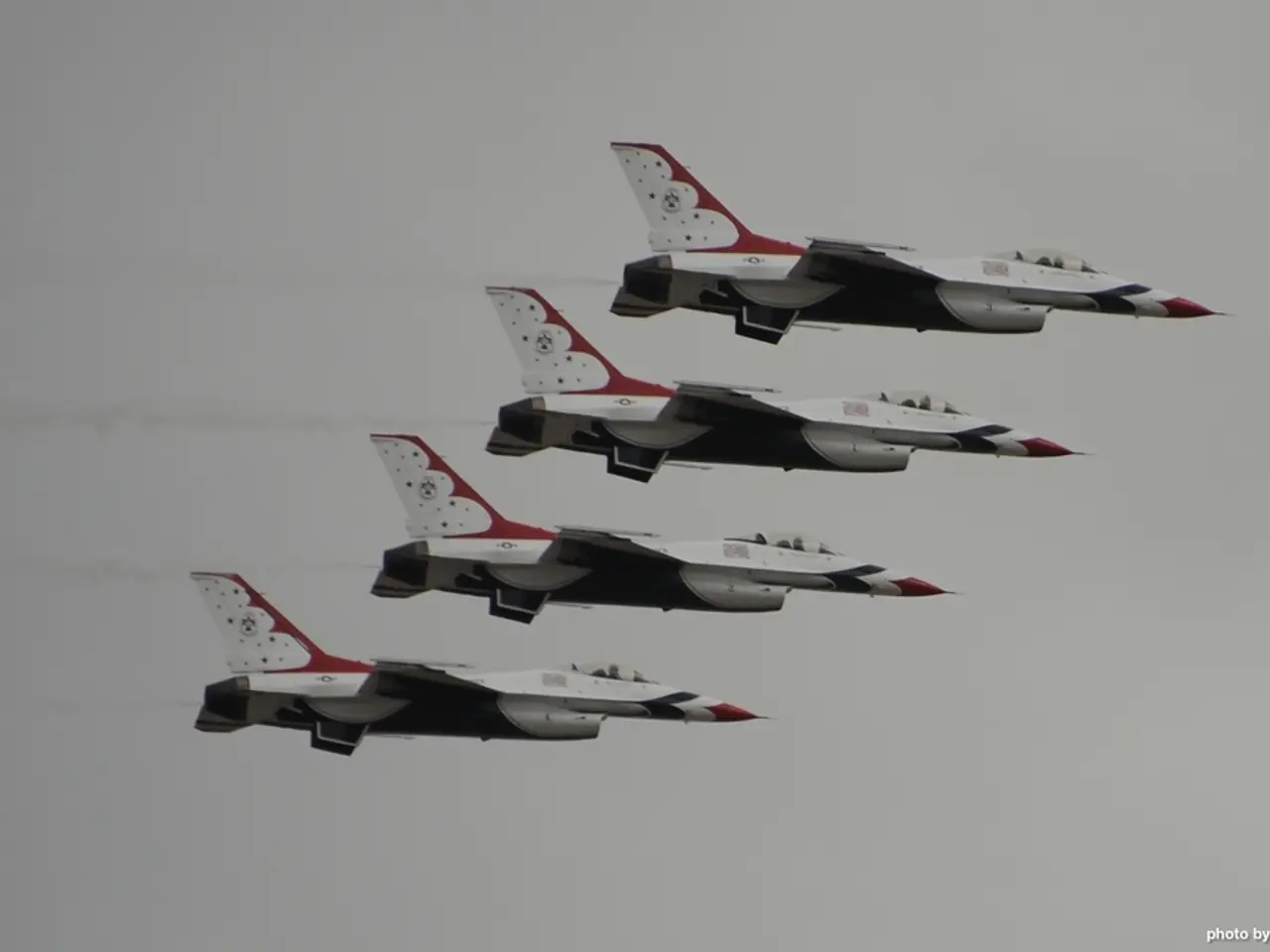Congress presents contrasting budget plans for the year 2026, with the House and Senate revealing their respective proposals.
Congress Advocates for Increased F-35 and E-7 Funding
The annual defense policy bill for 2026 has been proposed by lawmakers, with the House and Senate Armed Services Committees advocating for substantially more F-35s and continued E-7 program funding than the administration requested.
The President’s Fiscal Year 2026 budget requested funding for only 24 F-35A fighters and zero funding for the E-7 Wedgetail program. However, the House and Senate committees have proposed differing levels of funding for these critical platforms.
The House Appropriations Committee proposes significantly higher funding, including $4.5 billion for 42 F-35As and $500 million to further develop the E-7 Wedgetail, effectively restoring E-7 funding that the administration sought to eliminate.
The Senate Armed Services Committee’s version of the authorization bill authorizes 34 F-35As (10 more than the President’s request), but like the House, appears poised to restore or continue some funding for the E-7 program as part of the appropriations process. The Senate Appropriations Committee’s draft defense spending bill includes $647 million for the E-7 Wedgetail, countering Pentagon plans to freeze the program.
The House Armed Services Committee’s draft authorization bill (Chairman’s mark) does not specifically address the F-35 procurement numbers but earmarks an additional $600 million to save the E-7 Wedgetail program, which the Pentagon planned to cancel.
This reflects a bipartisan congressional push to increase F-35 procurements well beyond the President’s request and to restore or preserve funding for the E-7 Wedgetail airborne early warning aircraft, which the Department of Defense had proposed to cancel or zero out funding for.
In summary, compared to the President’s budget:
| Aircraft | President's Request (FY26) | House Proposal | Senate Proposal | |-------------|----------------------------|--------------------------------------|-------------------------------------| | F-35A | 24 fighters | $4.5B for 42 fighters | Authorization for 34 fighters | | E-7 Wedgetail | Zero funding | $500M+$600M to restore funding | $647M included in Appropriations bill |
The congressional committees are advocating for substantially more F-35s and continued E-7 program funding than the administration requested, reflecting concern over reducing these critical platforms.
However, the final funding levels will be determined only after the House and Senate reconcile their differing bills in conference later in the legislative process.
Additional Provisions
- The House chairman's mark does not touch the A-10, but several HASC members are likely to introduce an amendment on the issue.
- The Senate version of the bill proposes to ensure the A-10 inventory cannot "drop below 103 aircraft in FY26."
- The Senate committee's plan bars the Air Force from retiring its remaining fleet of more than 100 A-10 close air support aircraft.
- The HASC mark proposes to invest an extra $250 million for spare parts to boost F-35 readiness.
Support from Stakeholders
- A group of retired Air Force generals, including six former Air Force chiefs of staff, signed a letter urging Congress to fund 75 new F-35As and to restore E-7 funding.
- The Air & Space Forces Association supports Airmen and their families, as indicated by the audio of this article being brought to them by the Air & Space Forces Association.
Controversies
- The Department of Defense argues that it can cut the E-7 Wedgetail and rely on space-based solutions, but observers question the wisdom of giving up a known capability for something unproven.
- The House Appropriations Committee proposes significantly higher funding for the F-35A fighters, allocating $4.5 billion for 42 units, exceeding the president's request of 24 fighters.
- The Senate Armed Services Committee's version of the authorization bill authorizes 34 F-35A fighters, 10 more than the president's request, and includes $647 million for the E-7 Wedgetail airborne early warning aircraft, countering Pentagon plans to freeze the program.
- In contrast to the president's budget, the House Armed Services Committee's draft authorization bill does not specifically address the F-35 procurement numbers but earmarks an additional $600 million to save the E-7 Wedgetail program, which the Pentagon planned to cancel.
- A group of retired Air Force generals, including six former Air Force chiefs of staff, signed a letter urging Congress to fund 75 new F-35As and to restore E-7 funding, emphasizing concern over reducing these critical platforms.
- The Department of Defense argues that it can cut the E-7 Wedgetail and rely on space-based solutions, but observers question the wisdom of giving up a known capability for something unproven, stirring political debates regarding policy-and-legislation in the realm of defense and general-news.





